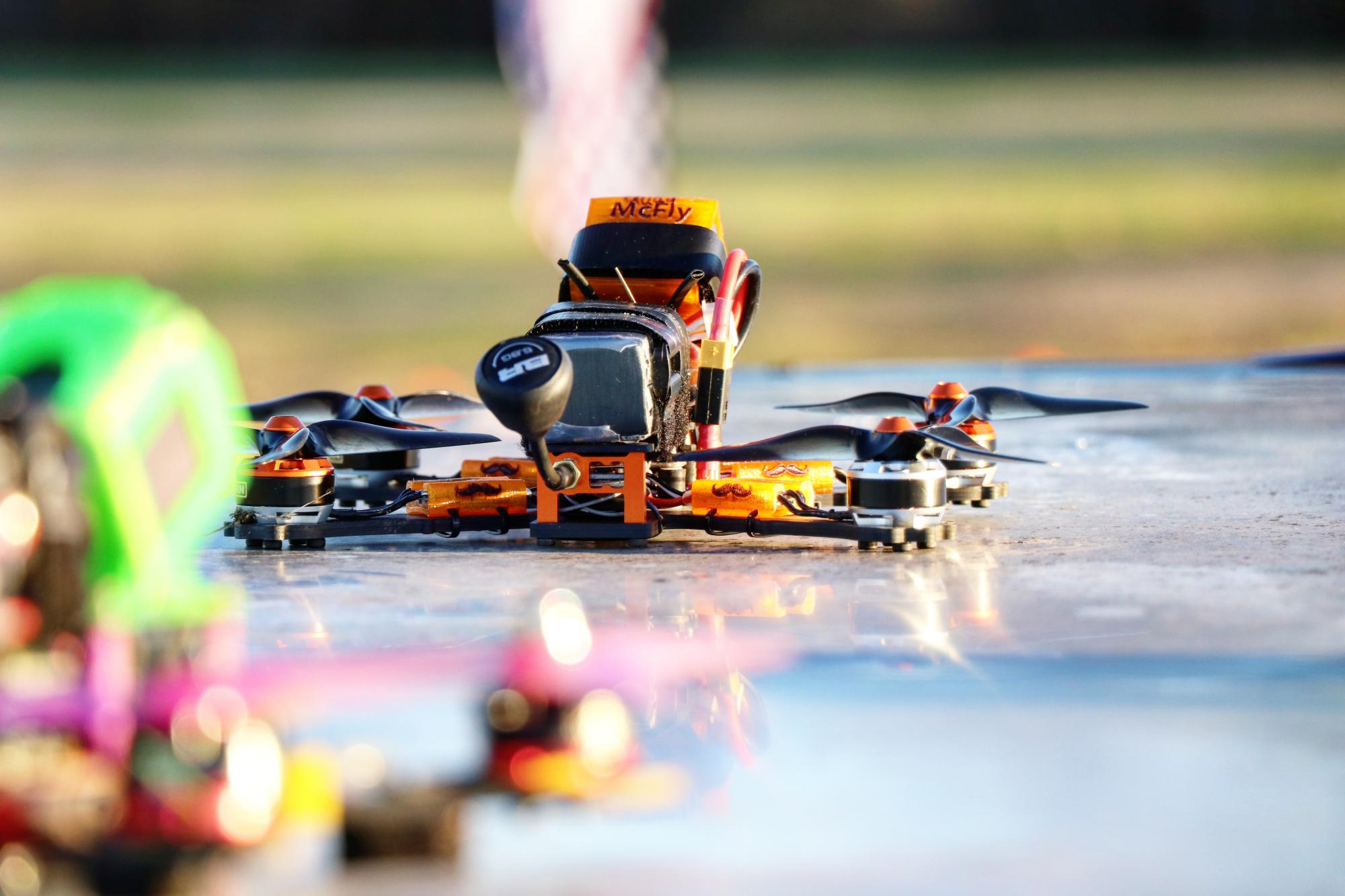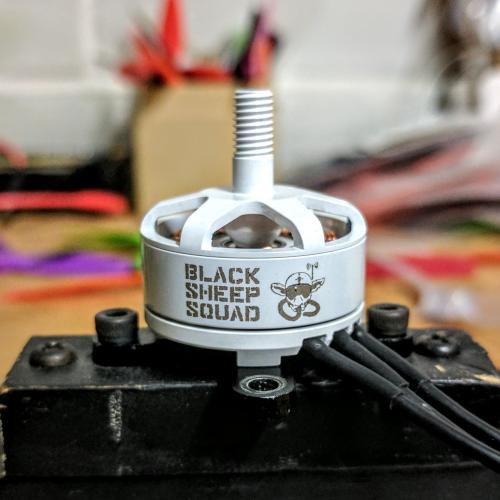- Home >
- Results >
- Motor Tests >
- Mid KV >
- TBS Steele 2306 2345kv
This is the specialty "Mr. Steele" motor from Team Black Sheep, sent over by a friend of the site for testing.
Check out the full list of motors in this series here
Summary
Any time a new motor is released there tends to be a good deal of speculation, especially with a high profile name attached to the motor. This motor was no exception. I have very little experience with TBS, and there was not a lot of information about this motor, so I was unsure what to expect when I got it in. The build is quite good, and the motor is surprisingly light for a 2306. The stators measure as claimed and have 30 0.20mm laminations. One thing that jumped out at me immediately was the thickness of the wires used in the windings. I don't think I've ever seen a motor come across the bench with thicker windings. The tolerances were all tight on the motor, and it spun very smoothly. The air gap between the magnets and stators was quite tight, though not quite as tight as some of the other high performance motors that have come across the bench. The magnets are fairly wide arc magnets, taking up a good amount of the bell circumference with a reasonable spacing between magnets. The only drawbacks that I noticed in the design are the 3mm internal shaft and bearings, which may not hold up as well as some of the 4mm designs on the market. Only time and use will tell that for sure though. Overall the build quality and design of this motor is solid, and the white finish adds a nice touch.
Test Results
Given that this motor was designed for the flying style of a particular pilot, this motor has some a-typical results from many of the high end motors on the market currently, opting for a specific throttle curve and optimum performance band rather than power. This is born out in the results, with stronger performance in the mid throttle range and a tapering of output at the high end due to lower strength magnets. Interestingly enough, like some of the other 23XX motors that have come across the bench, the efficiency through most of the throttle curve on this motor seemed to be struggling. For example the current usage across the entire throttle curve was almost identical to the ReadyMadeRC Rifle motor, but the RPM output was 6-10% less depending on prop and throttle position, though that viariance is likely to shift some under dynamic load. Transition speeds were also a bit slower due to the weaker magnets, smoothing out some of the feedback issues and twitchiness that tend to present themselves in high torque motors at the cost of a bit of responsiveness. Overall this motor performs exactly as it was intended, creating a very specific throttle curve for the tastes of a specific pilot.










































